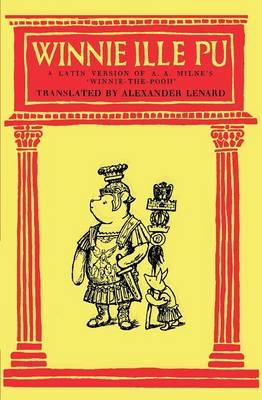Winnie ille Pu facts for kids
Winnie ille Pu is a special version of the famous children's book Winnie-the-Pooh that was translated into Latin in 1958 by Alexander Lenard. This book became surprisingly popular and was the first book not written in English to appear on The New York Times Best Seller list. Its big success encouraged people to translate other popular children's books into Latin.
Contents
How the Book Was Made
Starting the Translation
Alexander Lenard began translating Winnie-the-Pooh while he was teaching in a mining town in Brazil. He had previously used the original English Winnie-the-Pooh book to help a boy learn English in Rome. This experience gave him the idea to translate it into Latin.
Lenard continued working on the translation even after he stopped teaching. He moved to São Paulo and kept working on the book there.
Finding a Publisher
At first, many publishers were not sure if a Latin version of Winnie-the-Pooh would sell well. Because of this, Alexander Lenard decided to publish the first copies himself in 1958.
Big Success
The book quickly became popular, first in Brazil, then in other countries. A Swedish publisher, Bokförlaget Forum, printed it next. After that, it was picked up by Methuen Publishing in the UK and then E. P. Dutton in the US.
When Winnie ille Pu was first released in the US, it received a lot of praise from newspapers. The Christian Science Monitor even joked that the book was "saving Latin." This positive attention made bookstores quickly sell out of the book. At first, only 1,500 copies were sent to the US, which made even more people want to buy it.
Overall, the book sold 125,000 copies in the US. It stayed on The New York Times Best Seller list for 20 weeks. This made it the first book not in English to achieve such a feat. Many people also bought the book to display it in their homes, showing off their interest in unique and classic literature.
What Happened Next
The huge success of Winnie ille Pu made people more interested in translating children's books into Latin. In the five years after it came out, several other famous children's stories were translated. These included The Tale of Peter Rabbit, The Little Prince, and Alice's Adventures in Wonderland. However, after this short burst of interest, the excitement for Latin translations slowly faded away.


